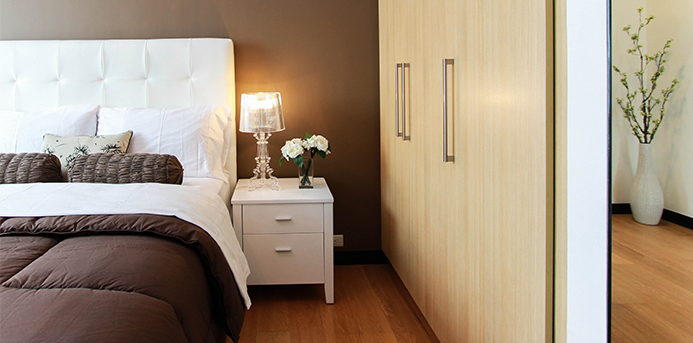Have you heard about smart light? Connected LED lights that add convenience to your life and save energy by turning on and off based on motion, voice control or other actions, smart lighting is the future of illumination in our homes and offices. But did you know it can also help with your health?
It’s well known that bad lighting, lack of exposure to sunlight, and too much time spent under artificial light can have negative health effects. Everything from headaches and eye strain to stress, depression and obesity have been linked to poor lighting. Lighting also has a powerful impact on your ability to sleep well.
“Poor sleep inevitably leads to health problems,” says Dr. Joseph Mercola, founder of alternative health website Mercola.com. Indeed, research has established links between lack of sleep and long-term health problems such as diabetes, high blood pressure and heart disease. “Maintaining a natural rhythm of exposure to daylight, and darkness at night, is an essential component of sleeping well,” says Mercola.
Smart lighting can help combat this thanks to something called “tunable light.” These are LED light bulbs and lighting fixtures that can move from a cool blueish light to a warm yellowish light based on a schedule, time of day or available ambient light. How does this help? By allowing our body clock to be stimulated by indoor light the same way it would if we spent all of our waking hours outdoors.
The human body is regulated by something called the circadian rhythm, more commonly known as our body clock. This is the cycle that tells our bodies when to go to sleep, wake up, and eat, which in turn prompts other physical processes essential to human health.
The circadian rhythm is controlled by our hypothalamus, a region of the brain that acts as a control center for much of our nervous system and is the hub of our sleep patterns. Because of this function, the hypothalamus reacts directly to light and triggers production of the hormone melatonin. Fluctuations in melatonin help the body establish its circadian rhythm. When we are exposed to the wrong light at the wrong times, we don’t produce melatonin and therefore have trouble sleeping and/or staying alert.
Smart bulbs from companies such as Sylvania, GE, Lifx and TP-Link promise to help your natural circadian rhythm by providing an optimum amount of the right type of light at just the right time of day. You don’t have to do anything. They adjust automatically, bathing you in the ideal light to energize you in the morning with bright, high-intensity light, using cooler, blue lighting to help you focus during the day, and then begin to wind down in the evening with calm, warm light.
“Light plays a key role in setting and regulating the body’s biological clock,” says a report by the U.S. Office of Energy Efficiency & Renewable Energy. “Both the intensity and the spectral content of light can be used to stimulate or suppress the secretion of melatonin and other hormones that in turn affect our mood, alertness, and health.”
The great thing about smart tunable white lighting is you can set it up to be customized to your unique needs. For example, GE has released a series called C by GE, which offers two different light bulbs, C-Life and C-Sleep. C-Life promises optimal daytime light, while C-Sleep has three different modes: nighttime, morning and everything in between. You can automatically transition between calm light in the evening and vibrant light in the morning, or you can use the smartphone app to adapt to different scenarios in your home. This kind of smart home technology can even be used to bring your family together — creating a setting perfect for family movie viewing, or a “homework time” setting that lets you settle in with the kids.
Lifx, TP-Link and Sylvania also offer smart, tunable white light bulbs you can integrate into your home to help achieve optimal lighting. These you can also control with your voice through a digital voice assistant, through motion by installing a smart home hub and compatible motion sensors, and through an app on your smartphone or computer.
Next time you find yourself in the lightbulb aisle looking to replace a burnt-out bulb, consider upgrading to tunable white LED light. The difference it can make to your health and well-being — and that of everyone who lives in your home — could be transformative.
More from Make It Better:
- 10 Ways to Set Kids Up for a Night of Healthy Sleep
- The Truth About Blue Light: Just How Harmful Is It?
- The Need for Sleep: Why You Should Turn Off Tech and Get Some Rest

Jennifer Tuohy is a mom and DIYer who has a passion for technology and sustainability. She also writes for The Home Depot. Jennifer writes on a wide range of topics, such as how smart home products can make you more efficient and how to create new traditions to share with your children.

